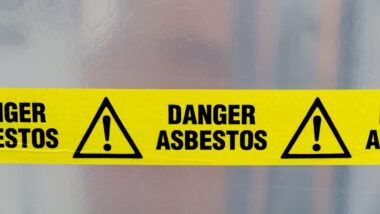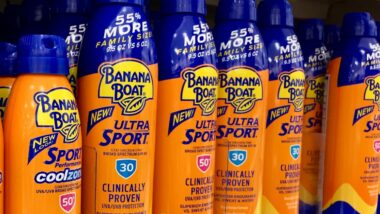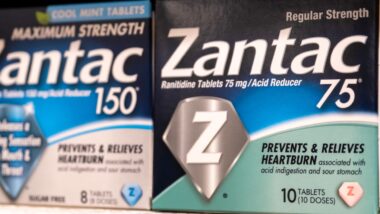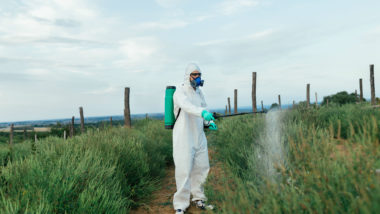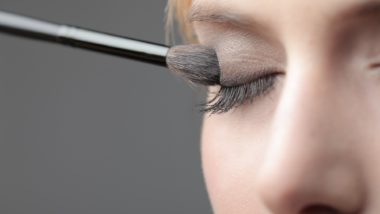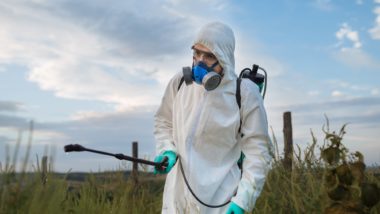Top Class Actions’s website and social media posts use affiliate links. If you make a purchase using such links, we may receive a commission, but it will not result in any additional charges to you. Please review our Affiliate Link Disclosure for more information.
Railroad ties are rectangular pieces, generally made out of wood, used as supports for the rails in railroad tracks. The ties help hold the rails upright and correctly space them apart, as well as transfer some of the weight load. These common pieces of railroad equipment are treated with creosote, a potentially cancerous chemical mixture.
Are Railroad Ties Cancerous?
Although railroad ties themselves are not inherently cancerous, these pieces of wood may be treated with a preservative that contains toxins and carcinogens, thus the purported link between railroad workers and cancer.
Creosote is a wood preservative that has been banned for widespread consumer use due to its potentially hazardous side effects. However, the chemical mixture is still used in many commercial industries and may be putting thousands of workers at risk of exposure.
It is still the most widely used wood preservative in the U.S., although it can only be used by people who have been specially trained on how to apply it to wood. Unfortunately, people who are unaware of the dangers of creosote may still be at risk of coming into contact with railroad ties.
Creosote is a chemical mixture comprised of tens or hundreds of chemicals. There are three main types of the preservative, including coal-tar creosote, which is used to treat railroad ties. Coal tar creosote is generally a thick, oily brown or black liquid with a sharp odor. Although the substance is still commonly used in the railroad industry, exposure to it may result in several dangerous side effects. The International Agency for Research on Cancer (IARC) and the U.S. Environmental Protection Agency (EPA) have both found that creosote is probably carcinogenic to humans, according to the Agency for Toxic Substances & Disease Registry. Workers in other industries, including those who work with asphalt, rubber, iron, aluminum, steel, and tires, may also be at risk of exposure to creosote.
In addition to being used as a wood preservative, creosote may also be found in some shampoos, chaparral tea, medicines or lotions that treat psoriasis, insect, animal, or bird repellents, and fungicides. In the past, the substance has been used for many purposes, including as a disinfectant, laxative, cough treatment, treatment for leprosy, treatment for pneumonia, and treatment for tuberculosis.
 What are the Side Effects of Creosote?
What are the Side Effects of Creosote?
If workers breathe creosote vapors or have direct contact with creosote or wood recently treated with the preservative, they may experience dangerous health consequences. Approximately 1% to 2% of the creosote that is applied to wood evaporates into the air, where it may be inhaled.
Additionally, workers may also come into contact with the chemical by drinking contaminated water or eating contaminated food. The chemical may also be found in water or soil near railroad tracks or factory sites, or in animals that drank contaminated water. If the chemicals in creosote are ingested, they may accumulate in the body’s fat stores and continue to cause side effects over time. Creosote in the body may also be passed through breast milk to infants.
According to the Virginia Department of Health, workers most likely to suffer from long-term creosote exposure include those in wood preservation, coke-production, or asphalt industries. Physical laborers that commonly work with telephone poles, fences, bridges, and railroad tracks also face a higher risk of exposure.
Long-term exposure to creosote-treated railroad ties may also cause cancer. Creosote-related cancers may include skin cancer or cancer of the scrotum. Exposure to the chemical may also damage the respiratory tract, kidneys, liver, and nervous system.
Those who are exposed to creosote-treated railroad ties may also experience skin redness, blistering, or peeling, in addition to increased sensitivity to sunlight. They may also experience chemical burns to the skin or eyes, and loss of vision or blurry vision. Ingesting the substance may cause a burning sensation in the mouth, throat, and stomach, as well as irritation of the respiratory tract. These symptoms may be followed by convulsions, mental confusion, and unconsciousness. In some cases, creosote exposure may result in death. Other symptoms that have been reported include a feeling of lightheadedness or dizziness, nausea, involuntary muscle spasms and jerks, nosebleeds, loss of vision or blurry vision, and irregular heartbeat.
Can I File a Creosote Exposure Lawsuit?
Companies have a legal responsibility to provide a safe working environment for workers, including proper safety equipment and training for handling unsafe materials or tools.
Unfortunately, railroad workers are increasingly coming forward after being diagnosed with various types of cancer, alleging that their disease was caused by on-the-job exposure to dangerous chemicals like creosote or benzene. Under the Federal Employers Liability Act (FELA), employers can be held liable for injuries that occur to workers while on the job. When filing an injury claims lawsuit under FELA, it is the plaintiff’s responsibility to prove that the company is at fault, willfully or negligently, for the injury or injuries in question.
Workers who have been diagnosed with cancer or other health conditions due to creosote exposure from railroad ties may be eligible to hire a qualified attorney and file a class action lawsuit. Filing a lawsuit cannot take away the pain and suffering caused by a cancer diagnosis, nor can it bring a loved one back to life, but victims who pursue litigation may be able to recover compensation for medical expenses, pain and suffering, injuries, and other damages.
Filing a lawsuit can be a daunting prospect, especially in the wake of a cancer diagnosis, so Top Class Actions has laid the groundwork by connecting you with an experienced attorney. Consulting an attorney can help you determine if you have a claim, navigate the complexities of litigation, and maximize your potential compensation.
Do YOU have a legal claim? Fill out the form on this page now for a free, immediate, and confidential case evaluation. The attorneys who work with Top Class Actions will contact you if you qualify to let you know if an individual railroad worker cancer lawsuit or class action lawsuit is best for you. [In general, railroad worker cancer lawsuits are filed individually by each plaintiff and are not class actions.] Hurry — statutes of limitations may apply.
ATTORNEY ADVERTISING
Top Class Actions is a Proud Member of the American Bar Association
LEGAL INFORMATION IS NOT LEGAL ADVICE
Top Class Actions Legal Statement
©2008 – 2024 Top Class Actions® LLC
Various Trademarks held by their respective owners
This website is not intended for viewing or usage by European Union citizens.
Get Help – It’s Free
Join a Free Railroad Worker Cancer Class Action Lawsuit Investigation
If you qualify, an attorney will contact you to discuss the details of your potential case at no charge to you.
PLEASE NOTE: If you want to participate in this investigation, it is imperative that you reply to the law firm if they call or email you. Failing to do so may result in you not getting signed up as a client or getting you dropped as a client.
E-mail any problems with this form to:
Questions@TopClassActions.com.
Oops! We could not locate your form.

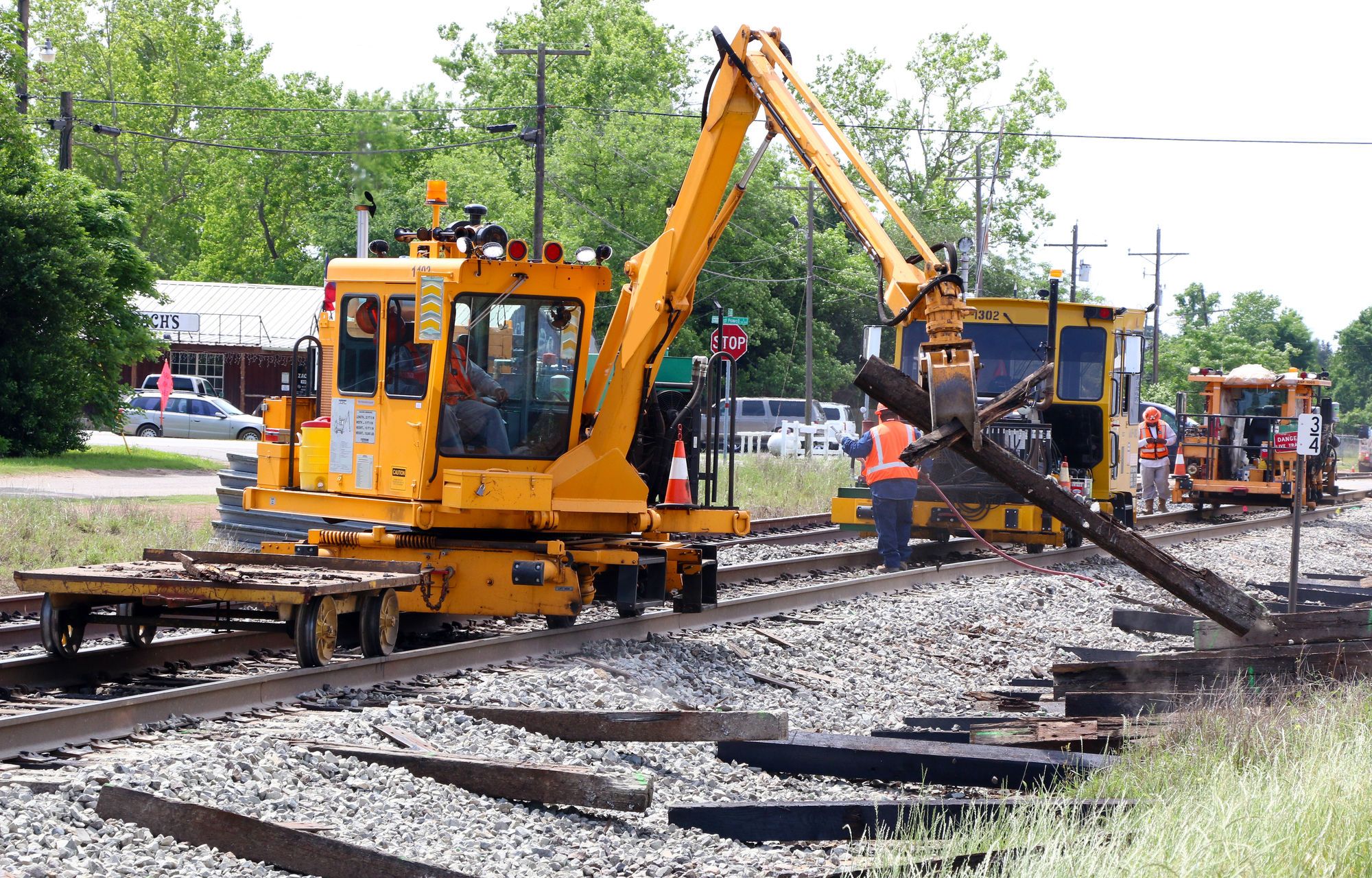
 What are the Side Effects of Creosote?
What are the Side Effects of Creosote?